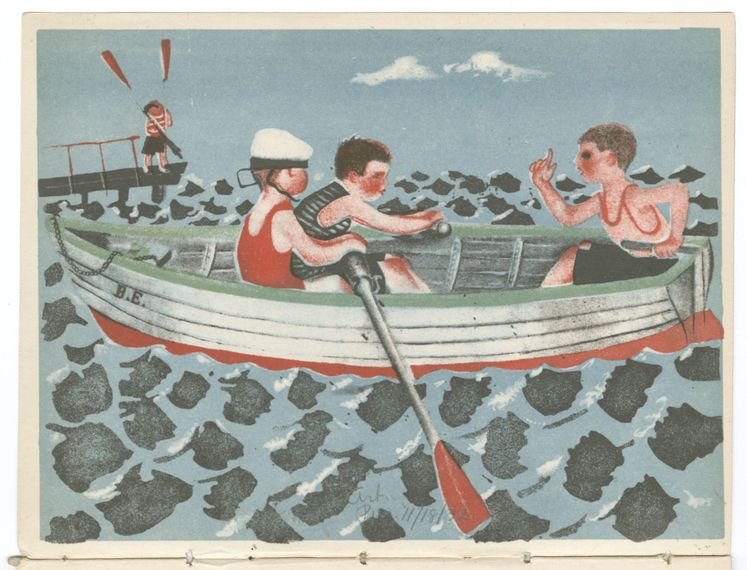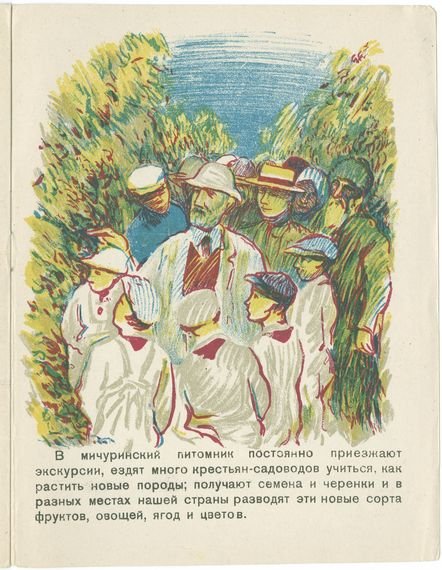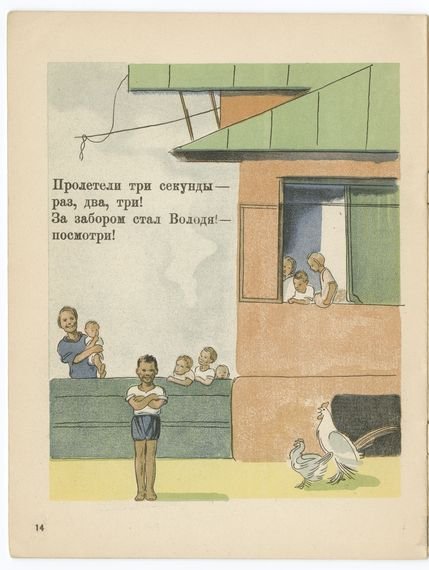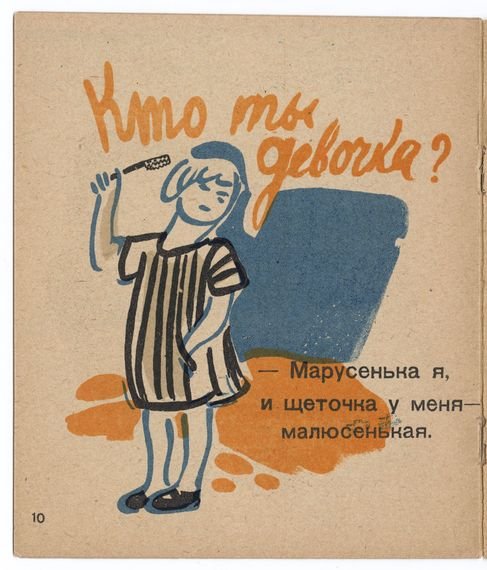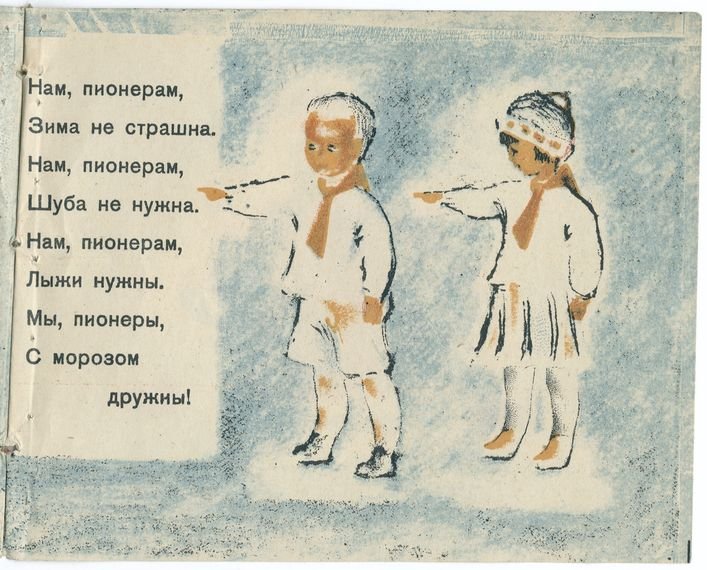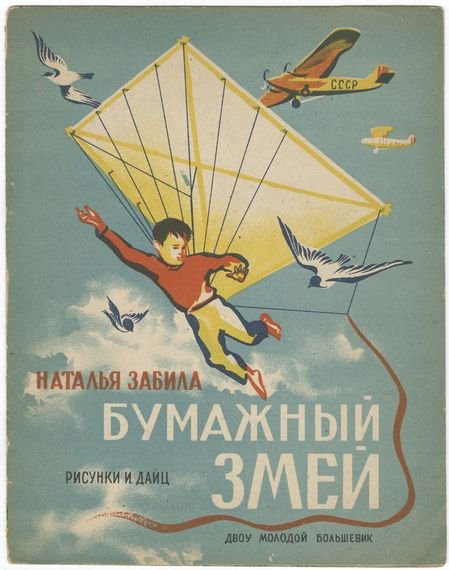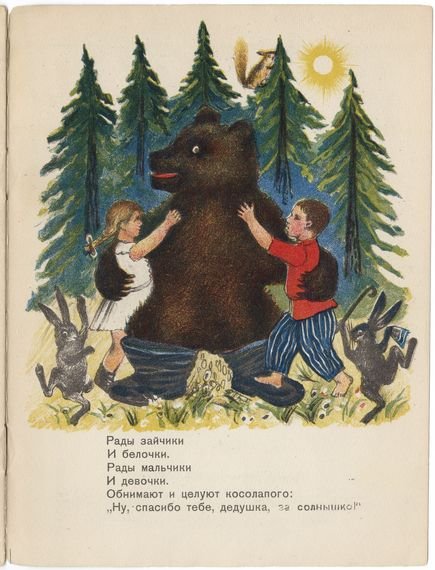The Individual
Introduction
As the Soviet Union’s parallel drives toward industrialization and collectivization gained pace from the late 1920s through the 1930s, the need for exemplary workers to push their peers ahead on the job quickly became apparent. Increasingly, Soviet iconography turned to the portrayal of individual heroes: the model citizen, with proper values and behavior, and the “shock worker,” who exceeded production targets in prodigious feats of labor. After 1935 this model Soviet worker was known as a Stakhanovite, in honor of record-breaking coal miner Aleksei Stakhanov. These heroes, outstanding members of the social collective, would lead society forward into the bright future through their strength, ironclad work ethic, and fearless intelligence.
Child Heroes
The idealization of the Soviet individual as hero found several modes of expression in Soviet children’s literature. Most often, the hero himself was a child. Some of these heroic children were naturally exceptional, like the hale and hearty Valia Ermakov, the protagonist of Evgenii Shvarts and Vera Ermolaeva’s Kupat'sia katat'sia (To Swim, To Ride). In this brightly colored telling of a real-life story, the ailing Valia is sent to a sanatorium with other children recovering from illness, where he quickly increases his height and weight, gains strength, and leads the pack in various physical activities. Most meaningfully, he also takes time to help the other children develop the abilities that come to him without effort. Another example in this vein is the title character of Aleksandr Vvedenskii’s Volodia Ermakov (1935). Though fictional, Volodia shares Valia’s superlative physical prowess. He boldly volunteers for a range of daunting physical activities, awing the other children while showing them that even the greatest of feats is achievable for true sons (his companions are all male) of Socialism.
Health and Heroism
While physical ability was undeniably important in an economy still largely based in manufacture and farming, there were other qualities Soviet ideologists wished to promote. Echoing the massive public health propaganda poster campaigns underway during these years (a prime example featured a couplet by famed poet Vladimir Mayakovsky “Fruits and veggies are a treat / Wash them with hot water before you eat!”), Iakov Trakhtman's Tri shchetki (Three Brushes) tells the story of Marusia, a little girl exceptionally devoted to staying clean. Marusia, one of the few female stars of the individual hero genre in Soviet children's literature, proudly proclaims her ownership of a toothbrush, a clothing brush, and a shoe brush, and demonstrates their use, with the intention that all proper children will follow her lead. Notably, Marusia is more important as an archetype than as a personality. Any child can learn good personal hygiene, but only the very talented few can step into the shoes of Valia or Volodia Ermakov. This form of paradigmatic typecasting is also operative in Zima krugom (Winter All Around), an earlier production by Aleksandr Vvedenskii (author of Volodia Ermakov). The progression in Vvedenskii’s work from hero-type to hero-icon parallels the shift toward individual heroes occurring in Soviet imagery at the time. Winter All Around tells the tale of a pair of Pioneers (the Soviet equivalent of Cub Scouts), hearty and impervious to chill temperatures thanks to their vigorous physical activities, and a pair of ordinary children who dream of becoming such heroes themselves – and achieve their goal.
Many Soviet children’s books featured child heroes who might not yet have reached their full potential, or stood out physically among their peers, but who possessed the visionary qualities to achieve greatness one day, always to the greater glory of the collective, of course. In Natalia L'vivna Zabila's Bumazhnyi zmei (Paper Kite), the narrator recounts his efforts to build a kite that will soar to the heavens. Though the kite string snaps and the boy falls to the ground rather than flying on into the cosmos, the failure of the project hardly matters. The lesson has been learned and the protagonist has taken an important first step towards realizing his true ambition of becoming a fighter pilot and perhaps even leading Soviet flight into outer space.
Role models
Adults, of course, also made excellent heroes for children. This branch of Soviet children’s literature likewise relied on a mixture of real-life individuals and archetypal fictional characters. Petr Miturich’s V pitomnike Michurina (In Michurin’s Nursery), tells the story of experimental Soviet botanist Ivan Michurin, explaining his contributions to Soviet science as he leads a group of acolytes through his brightly colored garden. This book even includes a note to teachers and parents emphasizing the importance of conveying Michurin’s story to the children under their care: “Michurin’s nursery is famous far beyond the borders of the USSR. Every child must know about this nursery, about these wondrous works. Show the child what is drawn in this book, read him what is written.” Boris Ural’skii’s Elektromonter (The Electrician), meanwhile, details through the worshipful eyes of a child narrator the exploits of the nameless but indispensable Soviet electrician, without whose expertise and abilities neither cinemas nor light bulbs can function. Like the ever-reliable postman on American lore, “Whatever the weather / Swift in his mission / Through the streets goes the electrician!” Even the greatest “hero” of the Soviet 1930s, Joseph Stalin, found his place in the Soviet children’s literature of this era, in the guise of a brave but modest bear in Kornei Chukovskii’s Kradenoe solntse (Stolen Sun). The bear saves the collective from darkness by defeating the selfish alligator who has swallowed the sun. This book is particularly intriguing for the way in which it grafts a new, more political reading onto a fable originally written in 1927. The reference to Stalin is made unmistakable by the accompanying imagery, in which the bear, wise and all-powerful, rules over the forest and its grateful, loving animal and children denizens, who greet him on the final page with words that echo Stalinist rhetoric of the day: “Thank you, grandpa, for the sun!”
Individual Style
The artwork in Soviet children’s books devoted to individual heroes is markedly different in style from that devoted to the collective. The illustrations of individual heroes retain their bright colors while becoming much more clearly drawn, with detailed, clean lines and fully-realized faces. In group scenes, the identity of the hero is never in question; he is recognizable either by his prominence in the scene, as in Paper Kite; his distance from, and often ahead of, the others, as in Volodia Ermakov; or others’ worshipful stance relative to him, as with the circle of admirers hanging on the famed botanist’s every word in In Michurin’s Nursery, and the children ecstatically hugging the bear at the conclusion of Stolen Sun. Even when left to his own devices, the hero is distinguished by a bold, confident facial expression (note Marusia’s defiant stance and declaration, “I am little Marusia, and I have a little toothbrush!”) and the fluid expertise of his movements, as with the electrician lightly dancing his way across the city’s power lines. The Soviet hero, in this literature, is still a member of the social collective, but unmistakably first among equals.
by Leah Goldman
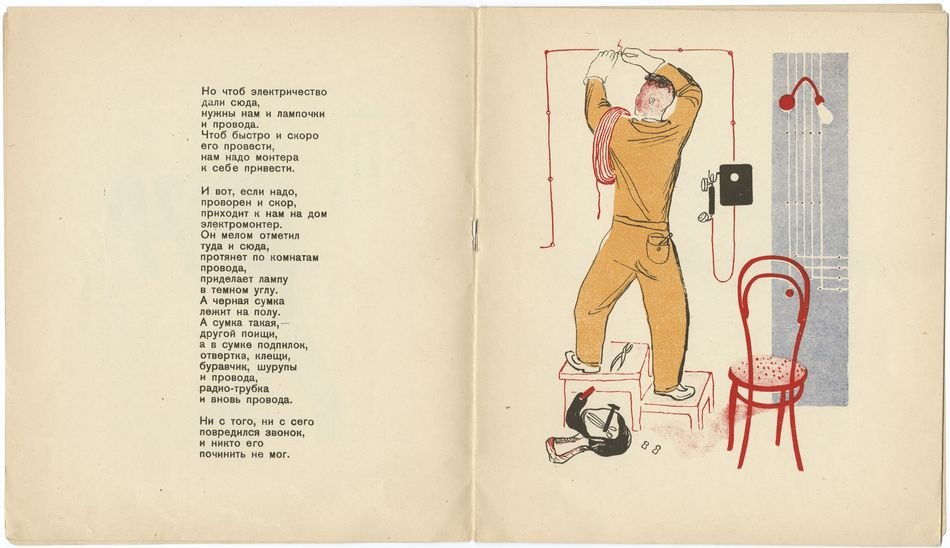
Boris Ural'skii. Illus. by Aleksandr Aleksandrovich Deineka. Moscow: Gos. izd-vo, 1930. © Estate of Aleksandr Aleksandrovich Dejneka/RAO, Moscow/VAGA, New York. vagarights.com
